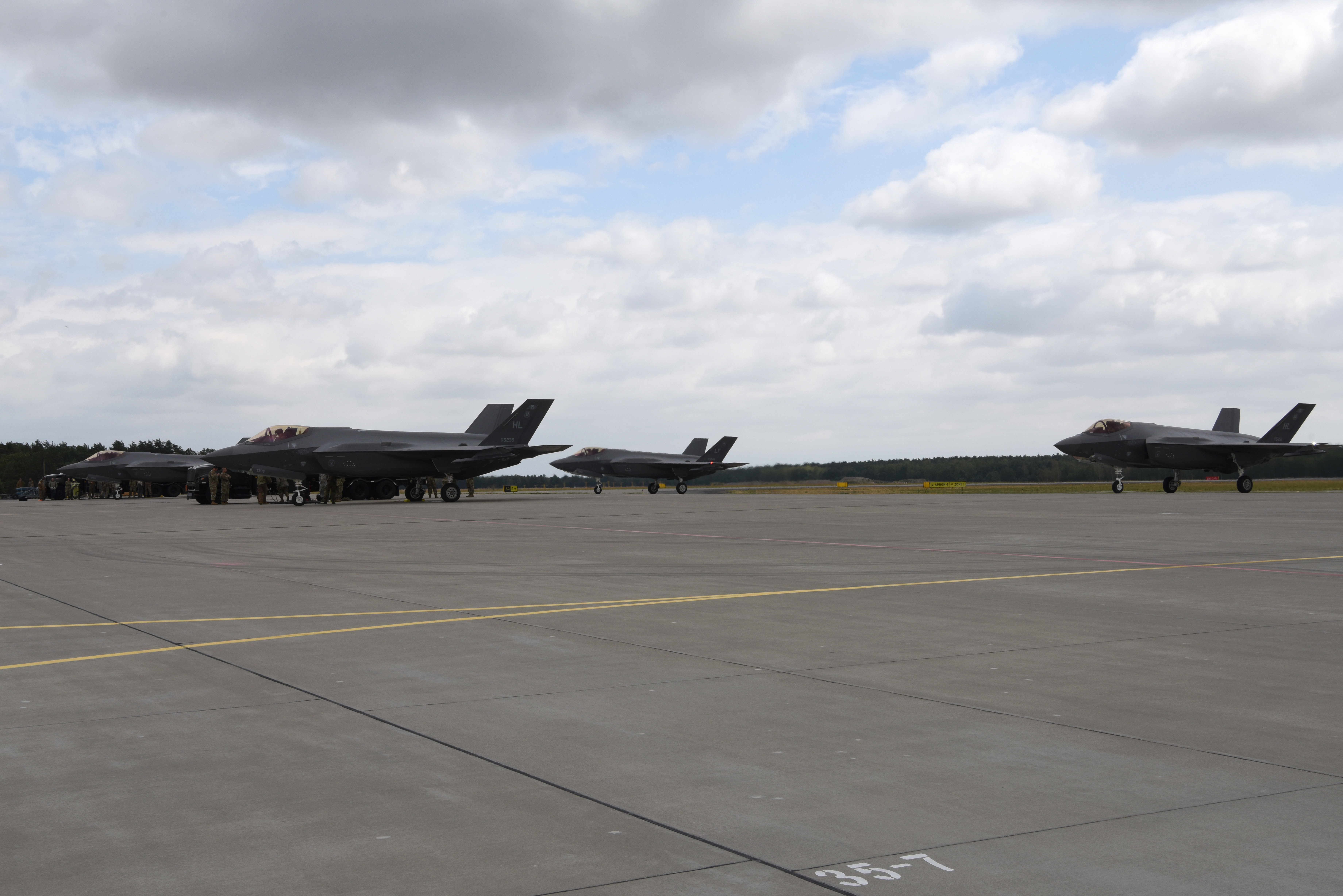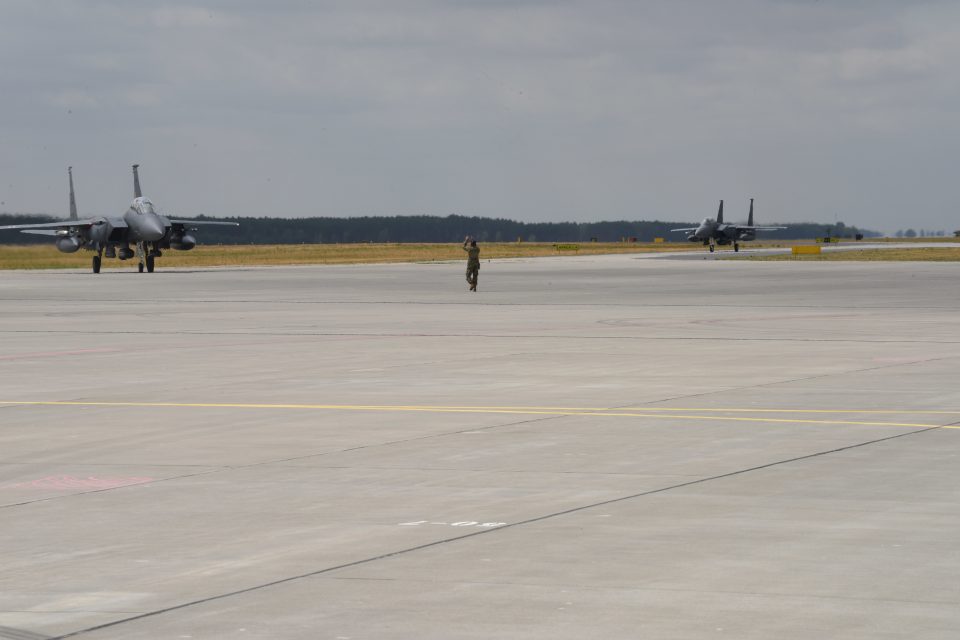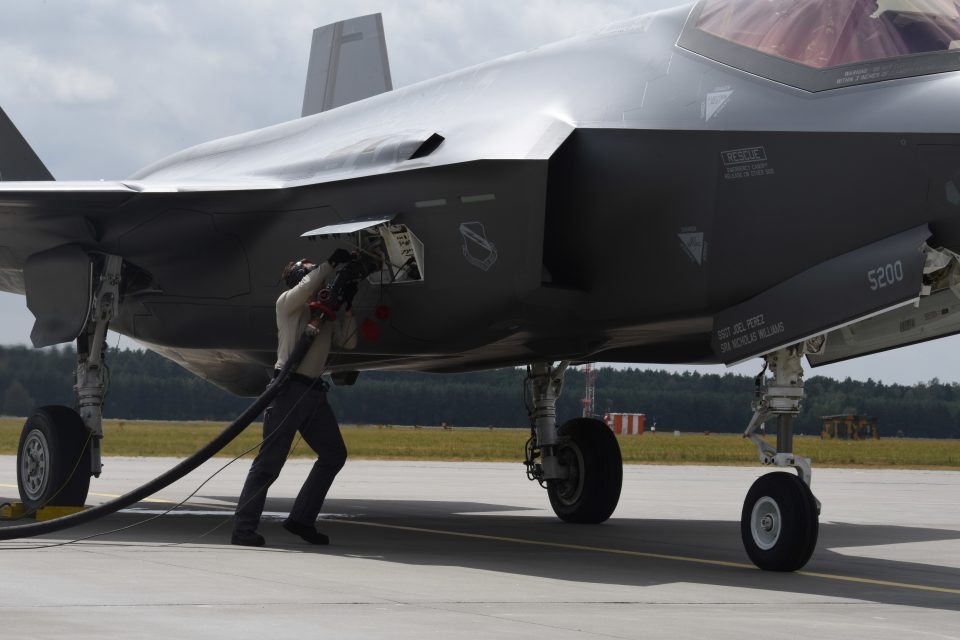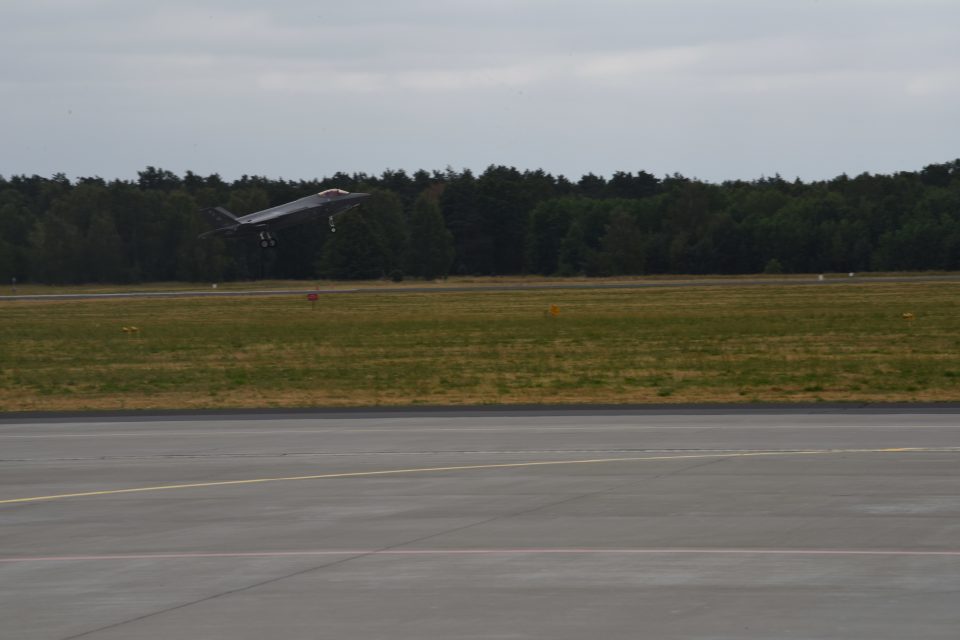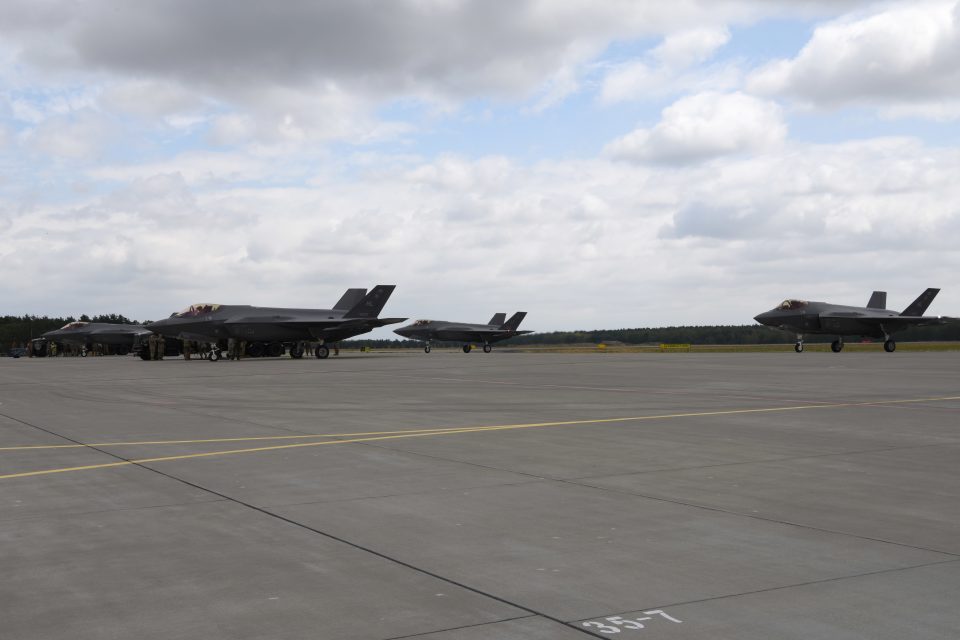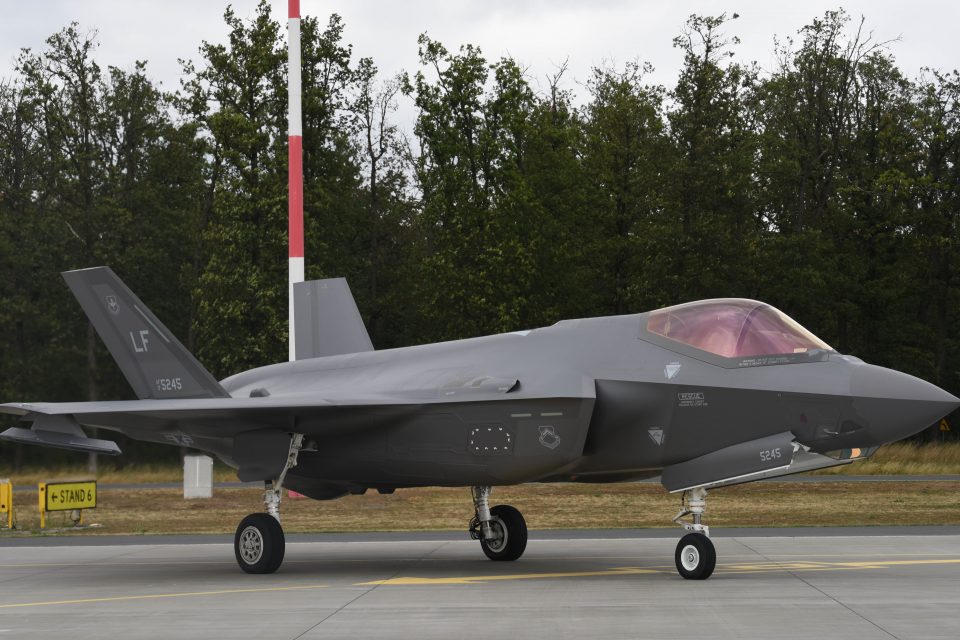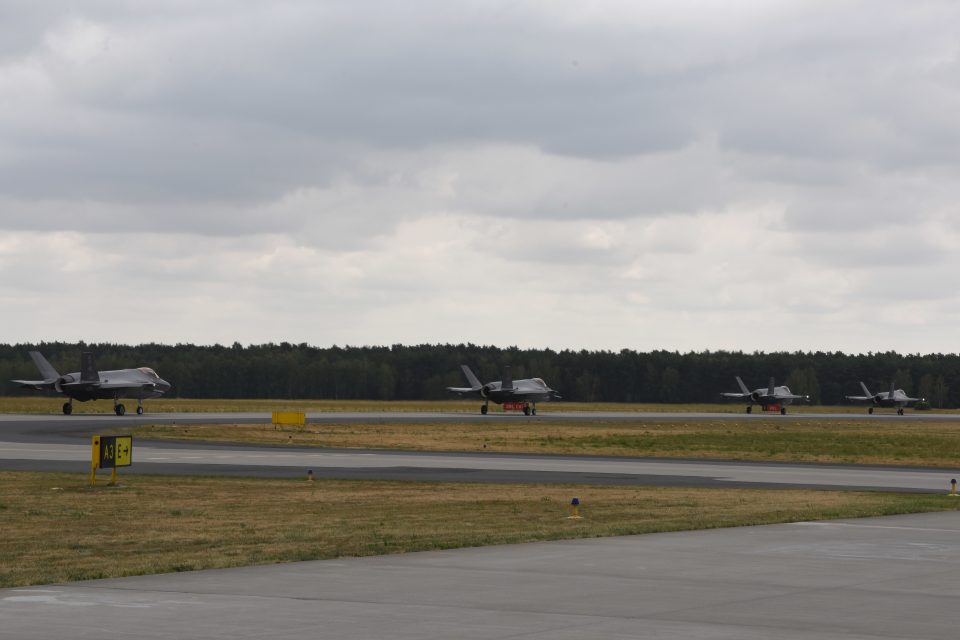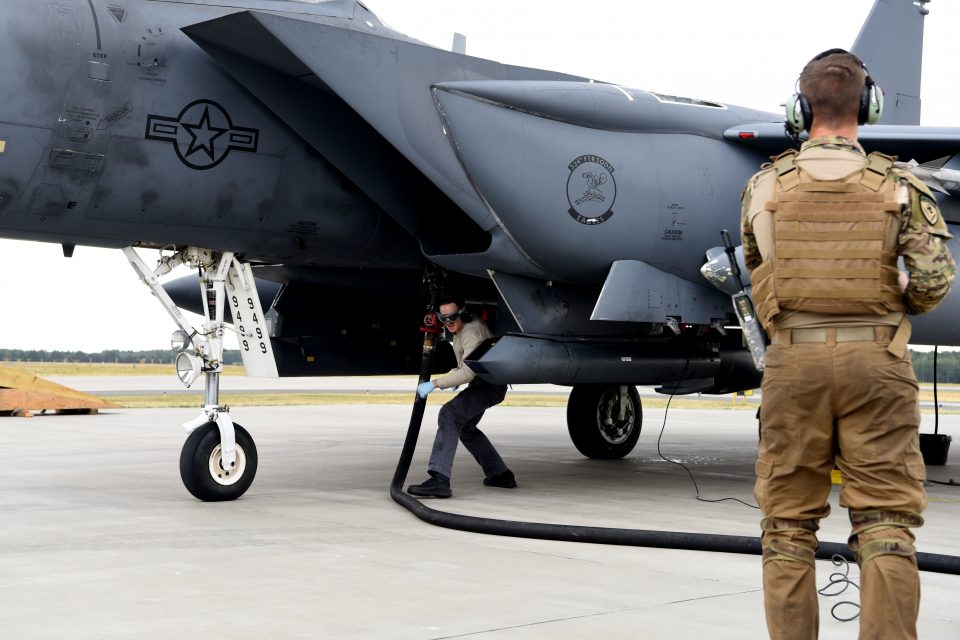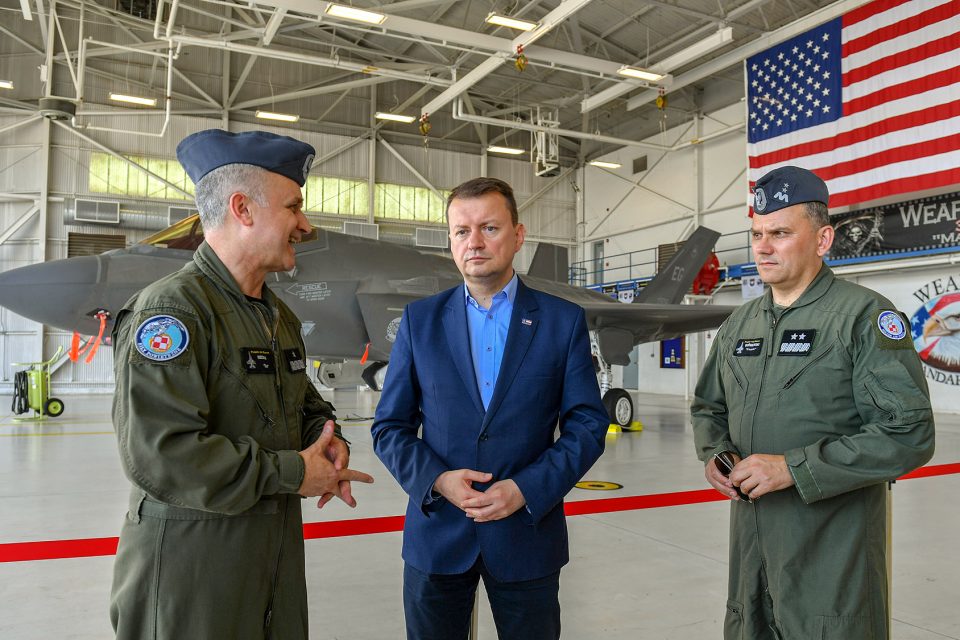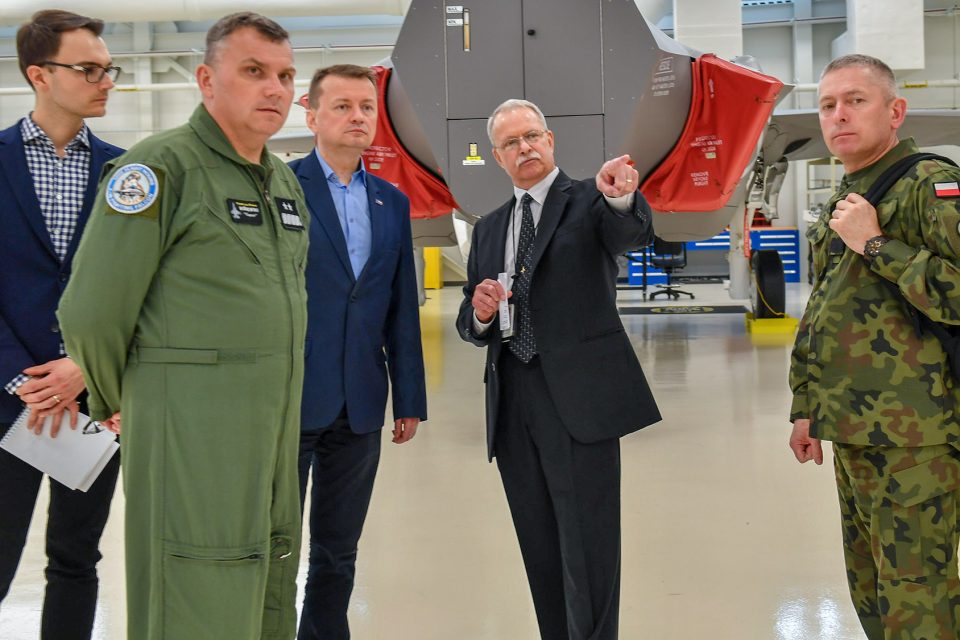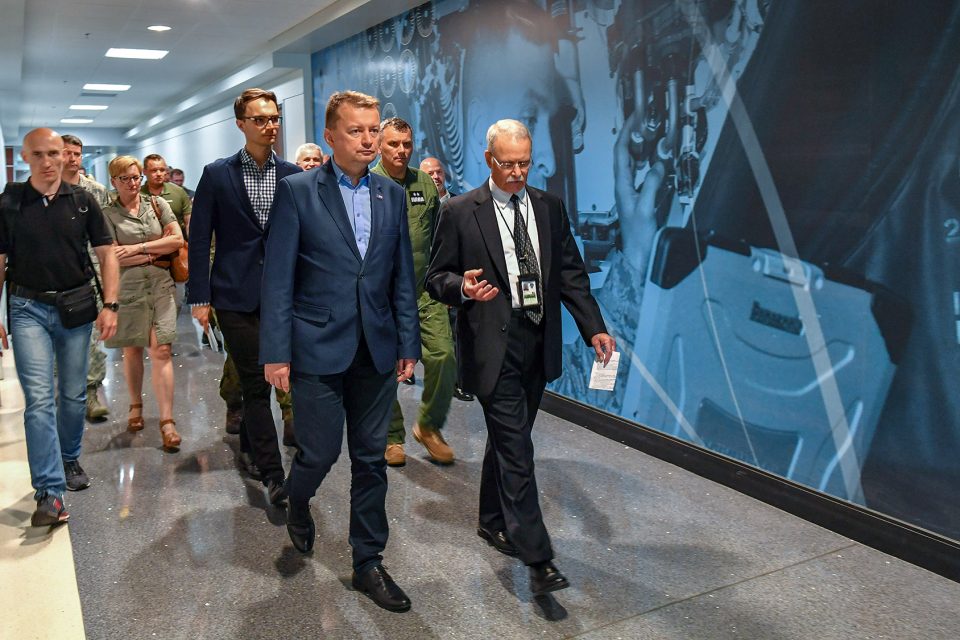Four U.S. Air Force F-35A Lightning II aircraft, deployed from the 388th and 419th Fighter Wings, Hill Air Force Base, Utah, landed at Powidz Air Base, Poland, July, 16, 2019.
This is the first time that U.S. Air Force F-35A Lightning II aircraft have landed in Poland.
With the arrival in an exercise in Poland of F-35s, clearly the question is as well of not only the acquisition by Poland of F-35s, but building the infrastructure for operating F-35s and shaping an infrastructure to facilitate as well allied operations of the F-35 fleet operating by both the United States and allies in Europe and the Middle East.
The image of the plane operating from Poland is one thing, but the core capability of an integrated fleet would be its ability to shape an ISR, C2 and strike and defense belt over continental Europe.
This is an inherent potential of the F-35 fleet, a potential that will only be realized by the United States and its allies working through security and other challenges to unlock the inherent potential of the F-35 to operate as an integrated not interoperable fleet.
In a Mitchell Forum paper published in March 2019, Major Luke J. Harris and Col. Max M. Marosko III, USAF addressed the question of US and Allied F-35 interoperability.
We would go further that there is a unique historical chance facing the United States and its F-35 partners — namely to forge an integrated force.
This possibility is inherent in the technology, but will not happen without the political will, organizational reform and reworking of who the United States and its allies approach the broader security challenges.
As Harris and Marosko III concluded their paper:
There are few DOD programs better postured than the F-35 to improve allied warfighting capability and overall relationships. However, an F-35 pilot will only be an effective force multiplier if F-35 aircraft systems can communicate seamlessly with other F-35s, and other aircraft.
Future F-35-equipped coalition forces must operate with common TTPs and a shared mental model achieved through high-end training and tactics disclosure.
The United States has accepted a higher level of risk by selling advanced U.S. stealth and sensor technology to other nations, and trusting our allies not to disclose these capabilities. That trust is built on the mutual understanding that it is in our allies’ national interest to protect these capabilities.
The United States, likewise, needs to trust our allies with the intelligence, information, and proven best tactics and practices that were previously not releasable, so they can optimally employ the F-35 and provide value-added combat capability.
With American F-35s dispersed worldwide, the U.S. is absolutely dependent on regional allied capacity and capability to succeed in future combat operations.
To optimize allied F-35 interoperability, the U.S. must remove the security and policy barriers that inhibit this objective and smartly share intelligence, technical information, tactics, techniques, and operating procedures with our allies.
Only by doing this will America see the true potential of the F-35 as a revolutionary combat capability.
Clearly, the addition of Poland to the F-35 global enterprise would expand the fleets operational reach in a way that would make it central to deterrence in the neighborhood.
In an article we published last month on June 22, 2019, we discussed the potential acquisition of the F-35 by Poland.
During the recent visit of the Polish President and a high-ranking Polish delegation, many key defense issues were discussed with President Trump and his Administration.
Among those issues was the potential purchase of the F-35 by Poland.
According to an article published on the Polish Ministry of Defence website, this prospect was discussed.
“Soon Poland will join the elite group of states whose air forces have the most modern F-35 aircraft. I want this process to proceed quickly and effectively,” said Mariusz Błaszczak, the Minister of National Defence after meeting the command of the Eglin Air Force base in Florida and the F-35 pilots.
On June 10, the head of the Ministry of National Defence began his visit to the USA and visited the Eglin Air Force Base, where, among others he became acquainted with the F-35 development program – the latest – 5th generation aircraft.
“We are advanced when it comes to the process of acquiring this state-of-the-art equipment – F-35 fighters. This is a big breakthrough in the combat capabilities of Polish Air Force.
“This is a challenge, but it is such an element that will certainly deter the potential aggressor,” the head of the National Defence Ministry said.
The minister reminded that at the end of May this year Poland has sent letter of request regarding the purchase of 32 F-35A aircraft.
“We are already in the process, we as MoND have placed the letter and there have been several meetings between experts from the Polish and United States Air Force. So, we are talking, I am happy that we will finish this process quickly,” added the head of the National Defence Ministry.
As the minister pointed out, the era of post-Soviet equipment used by the Polish Air Force ends, and era of the fifth generation equipment and therefore the most modern one, begins.
The minister added that he wanted the Polish pilots, who belong to the world’s leaders, to have effective and safe equipment.
“The planned purchase of F-35 fighters fits into the creation of the entire system that deters a potential enemy. Earlier, I signed contracts for the purchase of Patriot and HIMARS systems,” said the head of the National Defence Ministry.
Note: Rapid Forge is a U.S. Air Forces in Europe-led mission to enhance readiness and test the ability to function at locations other than the main air bases.
POLAND
07.16.2019
Video by Senior Airman Sara Voigt
86th Airlift Wing/Public Affairs
a2dd91_f1044f4294e443d2966785da9ce3368c


